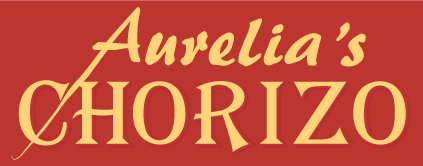My Journey to Creating Artisan Spanish Chorizo

Back in 1991, a dear friend returned from the northern region of Asturias in Spain, known for its exquisite smoked meats. She gifted me a small tin of handmade Spanish chorizo. At the time, I had no idea that this humble can of brick-red sausages packed in orange-streaked pork lard was a family treasure. When she explained that the chorizo was crafted from a secret family recipe passed down for generations, I knew I had to try it. That first bite was unforgettable. The flavors were unlike anything I’d ever experienced – tart with hints of wood-grilled meat, the sensuous warmth of smoked paprika, and a subtle spiciness that lingered.
That moment sparked an obsession. This chorizo was the essence of umami, and I couldn’t stop thinking about it. At the time, however, finding authentic Spanish chorizo or smoked paprika in the U.S. was nearly impossible. Luckily, my friend generously shared her family’s recipe. I began diving deep into the history and craft of making Spanish chorizo – not the fresh version common in Mexico, but the dry, air-cured kind from Spain. I discovered that in Asturias, chorizo is traditionally smoked over chestnut wood. Unable to find chestnut wood locally, I researched alternatives and found that hickory could produce a similar sweet, smoky flavor.
Armed with smoked paprika sourced directly from Spain, I began experimenting. I produced 80-pound batches of chorizo in our home kitchen, staying as true to the original recipe as possible. I bought fresh hams, crafted the sausages, and took them to local smokehouses, paying to have them smoked over hickory. But the process wasn’t quite right – chorizo needs cold smoking, while smokehouses use hot smoke. Even when we tucked our sausages into the coolest corners, the heat was still too much.

The early days were filled with trial and error. Using just a standard KitchenAid mixer with a meat grinder and sausage stuffer. Air-curing the sausages was another challenge due to limited space. Friends loved the Artisan Spanish Chorizo and often joined in on sausage-making parties, but I worried about the safety of making it at home. Once the internet became more accessible, I delved into extensive research, learning about food safety, pH levels, and USDA regulations. I even consulted local health departments and discovered that getting USDA approval for cold-smoked products was a significant hurdle.
Determined, I went all in after my son graduated high school. I consulted with professors at Texas A&M’s food science department, who helped me develop a USDA-approved pasteurization process. This led me to a small meat processor specializing in smoked sausages, where I found the perfect partner. I purchased specialized equipment for cold smoking and air curing, and the plant manager adapted the facility to meet our needs. Together, we brought Aurelia’s Artisan Spanish Chorizo to life, named in honor of a woman I met in northern Spain who taught me to truly appreciate food.
I was committed to creating a pure, all-natural product without fillers, nitrates, or artificial curing agents. Using the same piquant smoked paprika from Spain, I’ve expanded Aurelia’s offerings. Our Spanish Style Besitos, bite-sized sausages perfect for parties, and Aurelia’s Grillers, longer sausages ideal for backyard barbecues, carry forward the rich flavors of my Artisan Spanish Chorizo.
My journey to create the perfect Artisan Spanish Chorizo has been a labor of love, rooted in tradition and respect for the craft. I’m thrilled to share these flavors with you and bring a taste of Spain to your table.
Leslie Horne, Aurelia's Chorizo Founder & Owner
